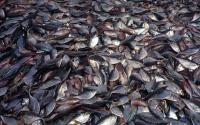Overfishing

Quicktabs: Keywords
In recognizing the sovereign rights and management authority of coastal States over living resources within their EEZs, the Convention brings most fisheries under the jurisdiction of coastal States. (Some 90 percent of living marine resources are harvested within 200 nautical miles of the coast.) The Convention imposes on coastal States a duty to conserve these resources and also imposes obligations upon all States to cooperate in the conservation of fisheries populations on the high seas and of populations that are found both on the high seas and within the EEZ (highly migratory stocks, such as tuna, as well as "straddling stocks"). In addition, it contains specific measures for the conservation of anadromous species, such as salmon, and for marine mammals, such as whales. These provisions of the Convention give the United States the right to regulate fisheries in the largest EEZ in the world, an area significantly greater than U.S. land territory, which contains some of the most resource-rich waters on the planet.
UNCLOS serves as the international foundation for fisheries management, giving coastal states sovereign rights over natural resources in their EEZs, a duty to conserve and the right to utilize fish stocks, and a duty to cooperate with other countries in the management of certain fish stocks.51 The 1995 United Nations Fish Stocks Agreement,52 to which the United States is a party, provides a precautionary approach to fisheries and encourages regional cooperation in management of fisheries in the high seas.53 Although UNCLOS does not provide a detailed regime through which state parties must manage fisheries, it provides a broad framework that encourages multilateral approaches to sustainable development of fish stocks.54
